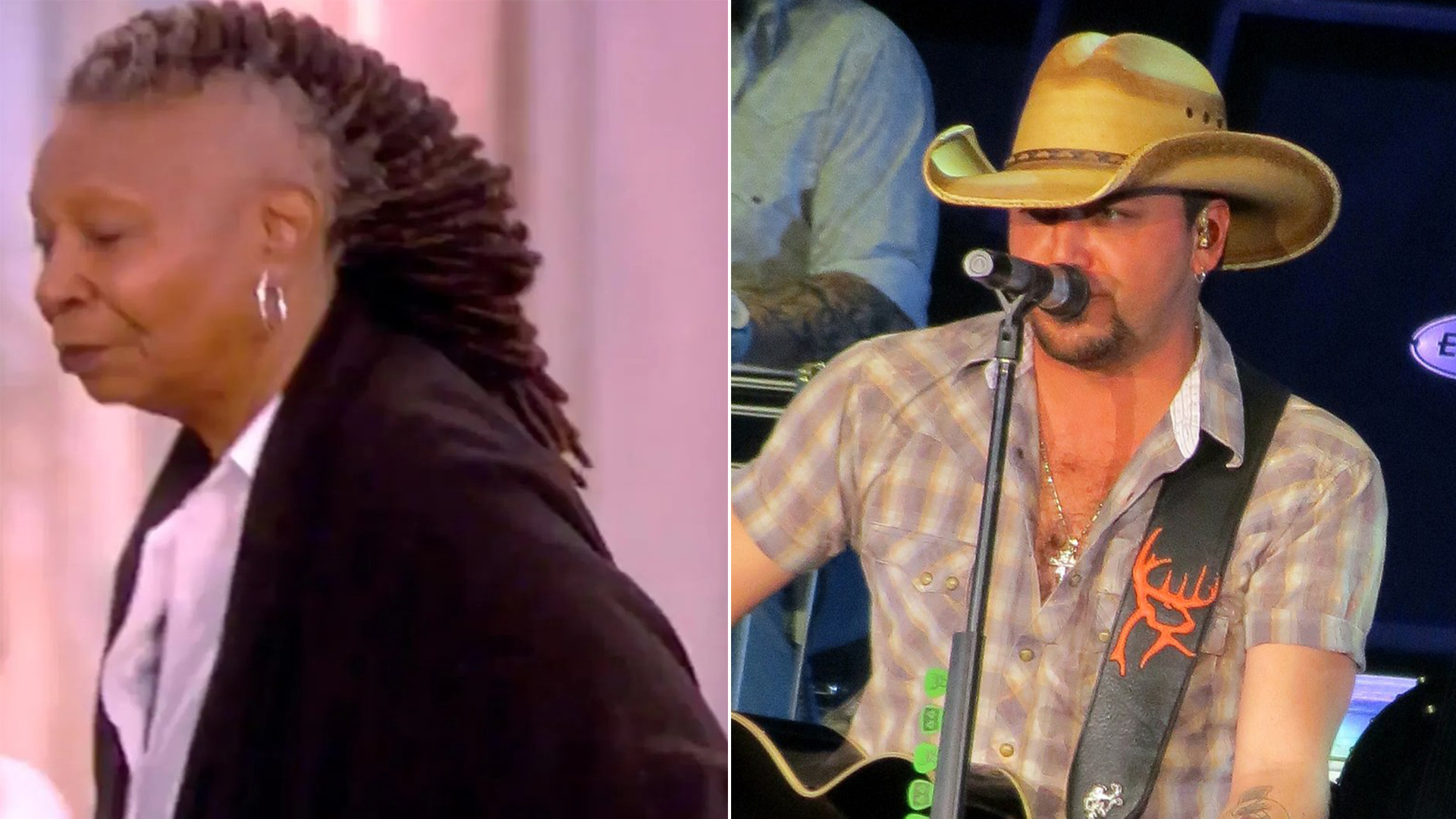In a dramatic episode of The View, co-host Whoopi Goldberg made headlines after she criticized country singer Jason Aldean’s controversial song, leading to her immediate removal from the set. This incident has sparked discussions about the boundaries of free speech in entertainment and the ongoing cultural debates surrounding music and its impact.
The segment began with the hosts discussing Aldean’s song, which has faced backlash for its lyrics, interpreted by many as promoting violence and intolerance. Whoopi, known for her candid and often fiery opinions, did not hold back. She expressed her concerns about the message the song sends, emphasizing the importance of responsible artistry in today’s sociopolitical climate.
Goldberg articulated her belief that music carries weight and influence, particularly in shaping societal attitudes and behaviors. “As artists, we have a responsibility to be mindful of the messages we share,” she said, underscoring the need for creators to consider the potential ramifications of their work. Her passionate defense of artistic integrity resonated with many viewers who appreciate her straightforward approach to difficult topics.
However, as Whoopi continued her critique, the atmosphere on set shifted. The show’s producers, possibly anticipating backlash or concerned about the tone of the discussion, made the decision to escort Goldberg off the set. This action shocked both the studio audience and viewers at home, who are accustomed to the lively and sometimes contentious debates that The View is known for.
The incident quickly went viral on social media, with reactions ranging from support for Goldberg to criticism of the show’s producers for their handling of the situation. Many fans of Whoopi applauded her willingness to speak out, noting that it’s essential for public figures to use their platforms to address pressing issues, especially in the current climate of division and discord.
Conversely, some critics argued that her removal undermined the very principles of free speech and open dialogue that the show claims to champion. They suggested that instead of silencing dissenting voices, platforms like The View should foster more nuanced discussions, allowing differing viewpoints to be expressed without fear of reprisal.
This incident is not the first time The View has been at the center of controversy. The daytime talk show has a long history of tackling hot-button issues, often leading to heated exchanges among co-hosts. However, the decision to escort Whoopi out raises important questions about the limits of expression and the responsibilities of media platforms in fostering meaningful conversations.
As the fallout from the incident continues, it has also prompted a wider examination of the cultural context surrounding Aldean’s song. Critics argue that the lyrics reflect a troubling trend in contemporary music, where artists may prioritize provocative statements over thoughtful engagement with their audiences. Supporters of Aldean, on the other hand, defend his right to express his views, arguing that censorship is not the answer.
Whoopi Goldberg’s passionate remarks and subsequent removal from The View serve as a microcosm of the larger cultural conversations taking place in society today. The incident underscores the challenges faced by artists and entertainers as they navigate the complexities of public opinion, political correctness, and the evolving landscape of social issues.
As discussions surrounding music, free speech, and accountability continue, one thing remains clear: the impact of art is profound, and the conversations it ignites are essential. Whoopi’s willingness to confront uncomfortable topics may have cost her a spot on the set, but it has also reignited vital discussions about the role of artists and the messages they convey.
In an era marked by increasing polarization, instances like this remind us that engagement—whether through agreement or disagreement—plays a crucial role in the evolution of culture. As the dust settles, it will be interesting to see how both the audience and the industry respond to this latest chapter in the ongoing dialogue about art, responsibility, and free expression.
